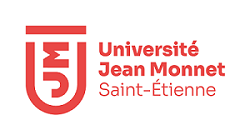Modeling of the angular tolerancing of an effective medium diffractive lens using combined finite difference time domain and radiation spectrum method algorithms
Résumé
A new rigorous vector-based design and analysis approach of diffractive lenses is presented. It combines the use of two methods: the Finite-Difference Time-Domain for the study in the near field, and the Radiation Spectrum Method for the propagation in the far field. This approach is proposed to design and optimize effective medium cylindrical diffractive lenses for high efficiency structured light illumination systems. These lenses are realised with binary subwavelength features that cannot be designed using the standard scalar theory. Furthermore, because of their finite and high frequencies characteristics, such devices prevent the use of coupled wave theory. The proposed approach is presented to determine the angular tolerance in the cases of binary subwavelength cylindrical lenses by calculating the diffraction efficiency as a function of the incidence angle.
Domaines
Optique / photonique
Origine : Fichiers produits par l'(les) auteur(s)
Loading...

